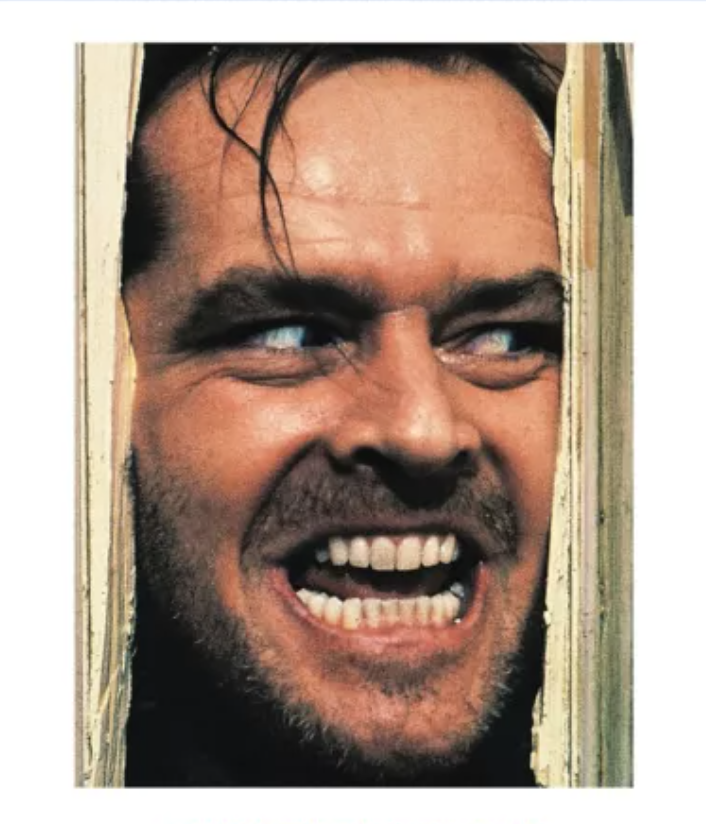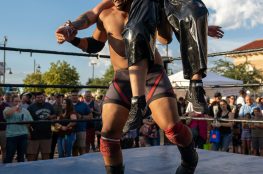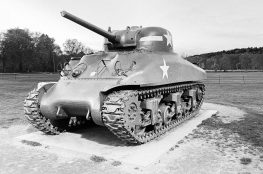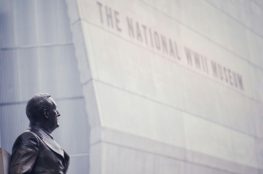Nuclear sabre rattling. Nikita Khrushchev, leader of the Soviet Union, banged his shoe on his desk at the United Nations. Peasant. Kulak. Pandemonium among the delegations. Four days later the Cuban missile crisis was in full swing. I was in second grade in the fall of 1962.
The ‘duck and cover' drills were designed to instruct the post WWII generation of children, and their parents by default, that a nuclear war was survivable and winnable. All one had to do was 'duck and cover.’ The nuclear attack drills began in schools throughout America a couple of years before I was born. My first memory of being in one of those drills was at Phalsbourg Air base in France where my dad was stationed in the late 1950’s as an airplane technician. Phalsbourg was a front-line base during the cold war. My memory is vague, but I am pretty confident that we practiced those drills at the base daycare.
What a ludicrous thought. The idea was that we could survive, maybe even win, a nuclear war; if only we just kept our heads down and stayed under our desks. It was a monstrous deception, in retrospect.
On November 22,1963 John F. Kennedy was assassinated. I was in a third-grade classroom at Woodrow Wilson Elementary school in Nankin Township, Michigan, an unincorporated area that would soon change its name to Westland, named after our regional shopping mall. Boosterism at work.
A message came over the classroom intercom speaker, a distended male voice saying calmly, “. . . The President had been shot in Dallas, Texas . . .” My idea of ‘shot’ was what happened to bad guys on Gunsmoke, my grandmother’s favorite television show. They got shot and they fell down. My third grade teacher sat there for a moment, stunned, then she left our classroom to join a gaggle of teachers gathered in the hall outside our classroom door. In retrospect, they were just kids themselves, those elementary school teachers, most in their early twenties. Not long after she returned to the classroom, another announcement declared that the President was dead. My teacher ran out of the classroom crying, leaving us all alone.
After some time, while waiting for her to return, one of my classmates got out of her chair and sat under her desk. Soon, all of us were sitting under our desks. Some of us were crying, some were wailing. We were all afraid. But we had been conditioned to believe that a safe place existed under our school desk. Silly, I know. Like it was an impenetrable shield. Our teacher never returned. After a while, my best friend, Doug Foster, said he was going home. We only lived a few blocks from the school, and we walked to and from the school each day. I thought he was very brave, so I left to go with him. Some of the girls screamed at us to stay, but we left anyway.
‘Duck and cover’ drills continued in my school district until I was in fifth grade. I do not remember participating in them after that. My last memory of the drills is sitting in the halls of Stottlemyer elementary school, each class lined up against a wall, on either side of the hallway, and sitting on the shiny waxed linoleum floor. We probably did not fit under the desks anymore so they moved us into the halls. I do not know why they stopped, I suspect the sheer idiocy of the exercise became apparent to everyone.
Most of my generation believed that it was just a matter of time before one side, or the other, would launch their nuclear weapons and our human experiment would end in a flash, the remainder of the survivors perishing in a nuclear winter. The latent tension, the inevitability, the belief that we were living on borrowed time was prevalent and emotionally exhausting.
In 1986, Sting and his band released their song, Russians.
“In Europe and America
There's a growing feeling of hysteria
Conditioned to respond to all the threats
In the rhetorical speeches of the Soviets
Mr. Khrushchev said, "We will bury you"
I don't subscribe to this point of view
It would be such an ignorant thing to do
If the Russians love their children too?”
In November of 1989 the Berlin Wall fell. The fear heightened. We felt a crescendo coming. But nothing happened. In 1991 the Soviet Union dissolved, and the fear of a nuclear war evaporated, dissipating overnight. It was wonderful. We thought humanity had turned the page and survived.
The fear is back.
This time, however, the nuclear sabre rattling is being made by a nation led by a dictator. The Soviet Union, contrary to our propaganda, was not a dictatorship run by one omnipotent leader; rhetorically, it was a self-described dictatorship of the proletariat. It was run by a committee. Putin is unencumbered by a Politburo. No cadre of politicians can stay his hand. In many ways this is much more dangerous than it was during the cold war.
Unfortunately, we blithely ignore the rhetoric as it escalates. We do so at our peril. I am one of the few Americans that monitor Russian state media. It is easy to find on YouTube with English subtitles. I listen to Putin's speeches, too, also subtitled. The calls to launch a preemptive strike are strident and occur frequently. They come from high-ranking Russian politicians and pundits. They argue that it will only take one attack against a NATO member and the alliance will fold up like a cheap suit. "I hope the Russians love their children too."
In verse two Sting asks, "How can I save my little boy, from Oppenheimer's deadly toy?" Hiding under our desks is not the answer.



